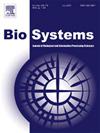The indispensable role of time in autonomous development
IF 2
4区 生物学
Q2 BIOLOGY
引用次数: 0
Abstract
Advances in single-cell analysis have led to a picture of development largely in agreement with Waddington’s eponymous epigenetic landscape, in which a cell’s fate is determined by its basin of attraction in a high-dimensional gene-expression space. Yet conceptual gaps remain as to how a single progenitor can simultaneously generate multiple endpoints, and why time should be required of the process at all. We propose a theoretical model based on the Hamiltonian mechanics of -dimensional rotational motion, which resolves these paradoxes. We derive the result that systems which become different from themselves over time must initially move in a direction not towards their ultimate endpoints, and propose that this process of resolving ambiguity can be quantified (in an information-theoretic sense) by the volume subtended in gene-expression space by the trajectories taken by the system towards its endpoints. We discuss the implications of this theory for the analysis of single-cell gene-expression data in studies of development.
时间在自主发展中不可或缺的作用。
单细胞分析技术的进步使人们对发育过程有了大致与沃丁顿同名表观遗传景观一致的认识,即细胞的命运取决于其在高维基因表达空间上的吸引力。然而,对于单个祖细胞如何同时产生多个终点,以及为什么这一过程需要时间等问题,仍然存在概念上的空白。我们提出了一个基于 n 维旋转运动哈密顿力学的理论模型,以解决这些悖论。我们得出的结果是,随着时间的推移而变得与自身不同的系统最初的运动方向一定不是朝着其最终端点,并提出这一解决模糊性的过程可以通过系统朝着其端点所走的轨迹在基因表达空间中所占的体积来量化(在信息论意义上)。我们将讨论这一理论对发育研究中单细胞基因表达数据分析的影响。
本文章由计算机程序翻译,如有差异,请以英文原文为准。
求助全文
约1分钟内获得全文
求助全文
来源期刊

Biosystems
生物-生物学
CiteScore
3.70
自引率
18.80%
发文量
129
审稿时长
34 days
期刊介绍:
BioSystems encourages experimental, computational, and theoretical articles that link biology, evolutionary thinking, and the information processing sciences. The link areas form a circle that encompasses the fundamental nature of biological information processing, computational modeling of complex biological systems, evolutionary models of computation, the application of biological principles to the design of novel computing systems, and the use of biomolecular materials to synthesize artificial systems that capture essential principles of natural biological information processing.
 求助内容:
求助内容: 应助结果提醒方式:
应助结果提醒方式:


